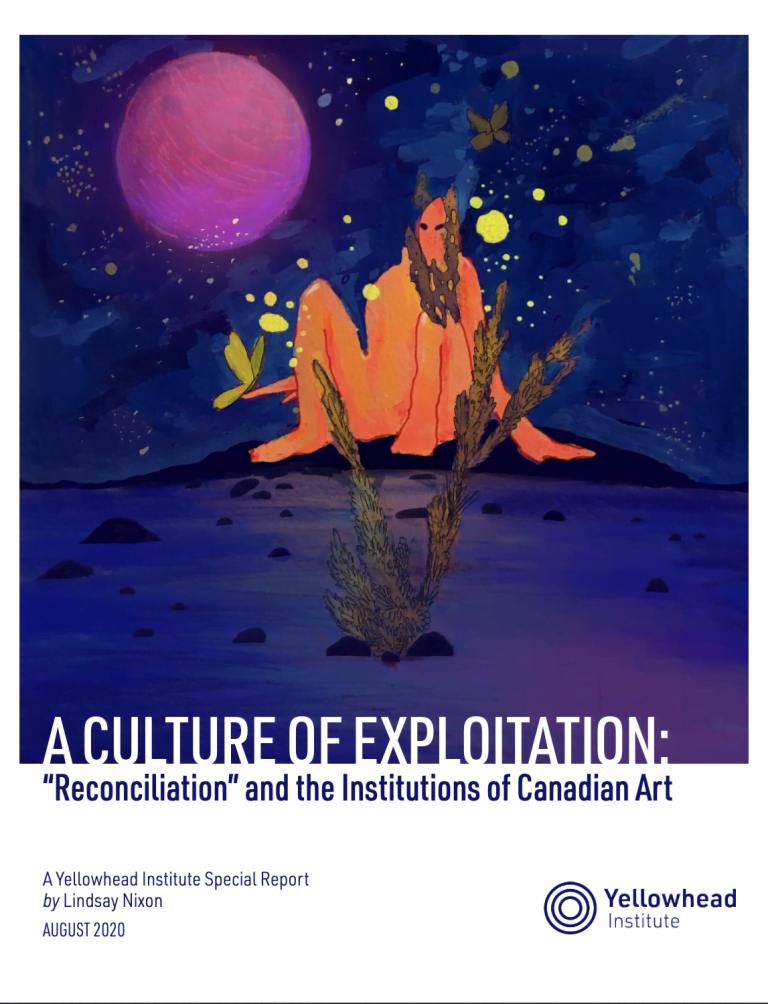4 search results
for
Provincial and territorial governments (General)
Recommendation 6:
Recognize that competition is endemic within art industries and ensure that policies and structures are implemented that ensure management, senior curators, senior editors, and other high-level positions are held accountable for gatekeeping, racist and misogynist micro-aggressions, preferential treatment of white employees and men, and workplace bullying, gossip, and other toxic cultures of white supremacy and misogyny in the ways they work, and the cultures they thereby promote within their organizations.
-
Category and theme:
Audience:
Groups affected:
Recommendation 7:
Restructure provincial and national arts funding in Canada. Funding initiatives for Indigenous peoples are still immensely important. But they need to be managed by Indigenous peoples and redesigned in a way that decentralizes institutional modes of power.
- Indigenous juries should have demographic qualifications, based on Indigenous consultation and development, that will ensure that all juries consist of diverse generations, backgrounds, fields, geographies, and other considerations.
- Granting bodies should shift to Indigenous board, panel, peer-reviewed, or jury led adjudication of professional status. Adjudication that accounts for alternative forms of professional development such as community knowledge and histories of mentorship. Until this is implemented, there should be greater transparency and dialog regarding the process of professional accreditation; namely, the assigning officers, their races and relationships to Indigenous peoples, and their qualifications to make such adjudications on behalf of Indigenous creative communities.
- The management of granting organizations and grant officers should meet demographic quotas that shift the minority and majority interest in Canada’s arts and culture granting institutions. Recruitment campaigns must widen their understanding of who can, and should, occupy these positions, even if that means investing in mentorship.
- Granting programs should strive to be discipline specific and include demographic quotas for diverse Indigenous groups such as Inuit, Black-Indigenous peoples, peoples residing in Reserve communities, folks in regions outside of currently over-represented central Ontario and Vancouver such as the prairies and the East Coast, community artists and vendors, first-time applicants, and other considerations.
- Granting bodies must invest significant resources into strengthening Indigenous self-identification measures, at least when it comes to accessing Indigenous funding lines. This will be a challenging exercise and must be flexible and evolving and ensure an ongoing dialog. Thus, this process requires continued resource investment from cultural institutions.
- Policy should be developed, in consultation with Indigenous communities, around the threshold of number of Indigenous employees to qualify for and receive Indigenous funding, and what precisely constitutes “Indigenous Art” for funding purposes.
-
Category and theme:
Groups affected:
Recommendation 19:
Canada needs to develop its own federal, provincial and territorial repatriation legislation, drawing from the shortcomings of NAGPRA and led by communities of Indigenous artists, curators, cultural administrators, Elders, and other respected Indigenous cultural leaders within Reserve and urban communities. While it must foremost be concerned with “human remains,” this legislation should expand the notion of repatriation beyond bodies to funerary objects, “sacred” objects, and objects of cultural patrimony. These laws must be meaningfully co-developed in collaboration with Indigenous peoples.
- These “Repatriation Acts” must be passed in every province and territory within the borders of Canada, and not simply apply to federal reserve lands.
- The legislation must have extremely strong compliance measures, with an accountability provision that allows Indigenous representatives to ensure the legislation is being enforced. As Indigenous people are not flora and fauna, Parks Canada should not be involved in the implementation of the legislation. Jurisdiction over “Repatriation Acts” could fall under the Canadian Heritage Portfolio or even the Minister of Justice.
-
Category and theme:
Audience:
Groups affected:
Recommendation 20:
Indigenous peoples should have cultural sovereignty over the management of their arts and cultures in Canada.
- In addition to legislation, federal, provincial and territorial governments should work to support the creation of a network of northern, reserve-based, and urban Indigenous cultural communities that could support a self-determined infrastructure for the direct funding of Indigenous artist-run centres and spaces nationwide. This network should build upon the work of cultural communities already on the ground and doing the work.
-
Category and theme:
Audience:
Groups affected:
